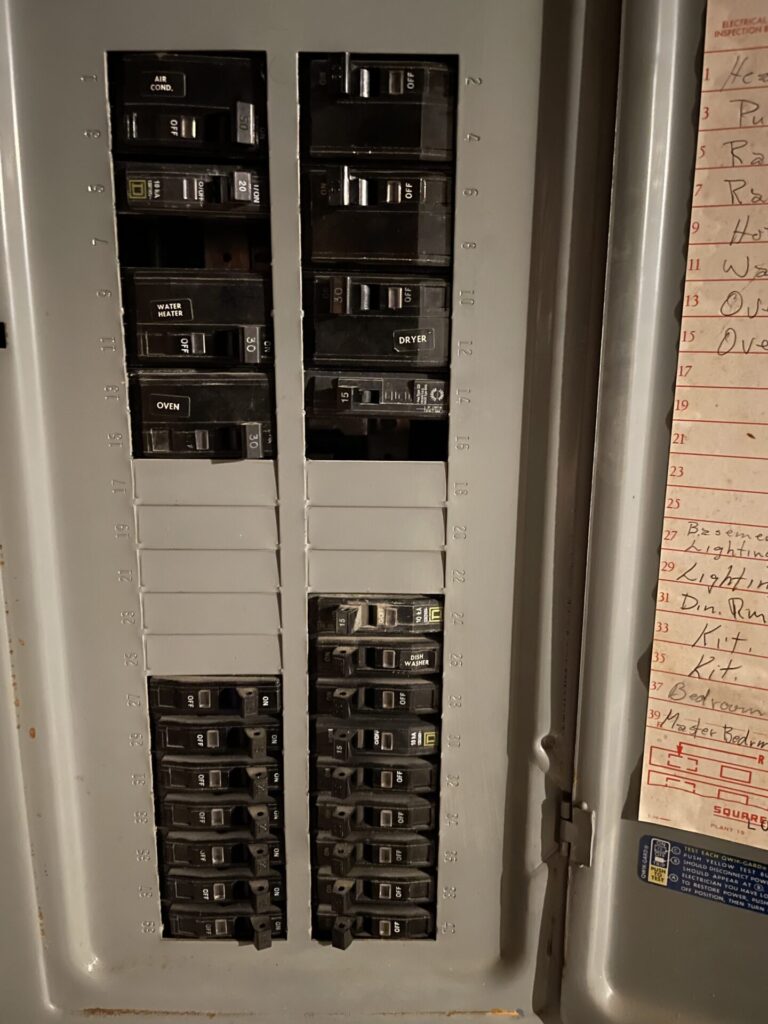
Are you ready to learn how to change a fuse in a breaker box? Founded in 2004 by Rod and Tina Yoder, R & T Yoder Electric, Inc. has been the go-to electrician service provider for countless customers. With over 50 employees and a family legacy of quality service, Yoder Electric is here to guide you through the process of changing a fuse in your breaker box. With their expertise and dedication to getting the job done right, you can trust Yoder Electric to help you with all your electrical needs.
Have you ever found yourself in a situation where the power in a part of your house suddenly goes out? You check the circuit breaker box, and sure enough, you see that a fuse has blown. You may feel a bit intimidated at the thought of changing the fuse yourself, but fear not! With a little guidance and some basic tools, you can easily change a fuse in a breaker box on your own. In this article, we will walk you through the simple steps to safely and effectively replace a fuse in a breaker box.
Understanding Your Breaker Box and Fuses
Let’s start by understanding what a breaker box is and how it functions. A breaker box, also known as an electrical panel, is the central hub for all the electrical circuits in your home. It controls the flow of electricity and protects your home from electrical overloads, short circuits, and faults. Inside the breaker box, you will find circuit breakers and fuses that are designed to trip or blow when there is an issue with an electrical circuit.
What is a fuse?
A fuse is a small, thin wire that is designed to melt and break the circuit when there is an overload of electricity. When a fuse blows, it prevents the excess electricity from flowing through the circuit and causing damage to your electrical devices or creating a fire hazard.
Understanding how a fuse works is crucial in maintaining the safety of your home’s electrical system. Always remember to replace a blown fuse with the correct type and size to ensure the continued protection of your electrical circuits.
Safety Precautions Before You Begin
Before you start working on your breaker box, it is essential to take some safety precautions to protect yourself from electrical hazards. Here are some key safety tips to keep in mind:
Turn off the Power
The most crucial safety step before opening your breaker box is to turn off the power to the entire house. Locate the main circuit breaker switch in the breaker box and switch it off. Make sure to inform everyone in the house that the power will be off while you work on the breaker box.
Use Personal Protective Equipment (PPE)
Wearing personal protective equipment (PPE) such as insulated gloves and safety glasses is essential when working on your breaker box. These items will help protect you from electrical shocks and potential injuries.
Never Work on Wet Surfaces
Water and electricity do not mix. Make sure the area around your breaker box is dry and avoid working on it if the floor or your hands are wet.
Tools You Will Need
To change a fuse in a breaker box, you will need a few basic tools and materials. Here is a list of items you should have on hand before you begin:
- Screwdriver (flathead or Phillips)
- Replacement fuse (make sure it matches the type and size of the blown fuse)
- Insulated gloves
- Safety glasses
- Flashlight (optional but recommended for better visibility)
Having the necessary tools readily available will make the process of changing a fuse in your breaker box much smoother and safer.
Step-by-Step Guide to Changing a Fuse in a Breaker Box
Now that you have an understanding of how a breaker box works, the safety precautions you need to take, and the tools you will need, let’s walk through the steps of changing a fuse in a breaker box:
Step 1: Identify the Blown Fuse
Start by examining the fuses in your breaker box to identify the one that has blown. A blown fuse will have a visibly broken filament or a discolored appearance. Be sure to confirm the proper fuse to replace by checking the labeling on the fuse itself or consulting the user manual for your breaker box.
Step 2: Turn Off the Circuit
Once you have located the blown fuse, switch off the circuit that the fuse is connected to. This will prevent any current from flowing through the circuit as you work on replacing the fuse.
Step 3: Remove the Blown Fuse
Using a screwdriver, carefully remove the blown fuse from its socket in the breaker box. Be gentle to avoid damaging the surrounding components.
Step 4: Install the New Fuse
Take the replacement fuse and insert it into the empty socket of the blown fuse. Make sure it fits securely and aligns correctly with the contacts in the socket.
Step 5: Turn On the Circuit
Once you have installed the new fuse, switch the circuit back on to restore power to the electrical circuit. Test the circuit to confirm that the new fuse has resolved the issue.
Step 6: Test the Circuit
After replacing the fuse and turning the circuit back on, test the circuit by plugging in a device and turning it on. If the device receives power and functions correctly, your fuse replacement was successful.
Common Mistakes to Avoid
While changing a fuse in a breaker box is a relatively simple task, there are some common mistakes that you should avoid to ensure your safety and the proper functioning of your electrical system. Here are a few things to keep in mind:
Using the Wrong Type or Size of Fuse
It is essential to replace a blown fuse with the correct type and size to avoid overloading the circuit. Using the wrong fuse can compromise the safety of your electrical system and increase the risk of electrical hazards.
Not Turning Off the Power
Skipping the step of turning off the power before working on your breaker box can lead to electrical shocks or injuries. Always make sure to disconnect the power to the circuit before replacing a fuse.
Ignoring Signs of Electrical Issues
If you frequently experience blown fuses in your breaker box, it may be a sign of underlying electrical issues. Ignoring these warning signs can lead to more significant problems in the future. It is essential to consult a professional electrician to address any recurring electrical issues.
When to Call a Professional Electrician
While changing a fuse in a breaker box is a task that many homeowners can handle on their own, there are situations where it is best to call a professional electrician. Here are some instances when you should seek the help of a professional:
- If you are unsure about how to locate or replace a blown fuse in your breaker box.
- If you notice signs of electrical issues such as flickering lights, buzzing sounds, or burning smells.
- If you suspect that a more complex electrical problem may be causing frequent blown fuses in your breaker box.
Remember that the safety of your home and family is paramount, and it is always better to seek professional help if you are uncertain about working on your breaker box.
Changing a fuse in a breaker box is a simple task that can be done safely and effectively with the right tools and knowledge. By following the step-by-step guide outlined in this article and taking the necessary safety precautions, you can maintain the proper functioning of your electrical system and prevent electrical hazards in your home.
Remember to always turn off the power, use personal protective equipment, and follow the correct procedures when working on your breaker box. If you encounter any issues or feel unsure about changing a fuse, do not hesitate to contact a professional electrician for assistance. With a little practice and the right information, you can confidently handle minor electrical tasks in your home.







